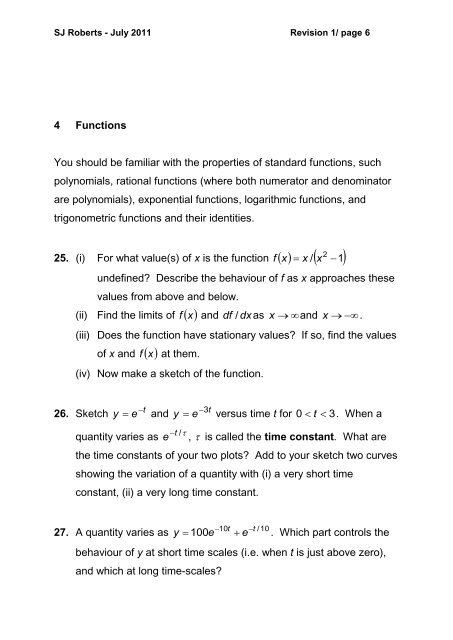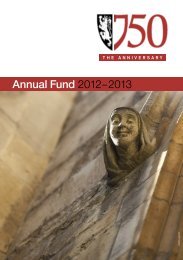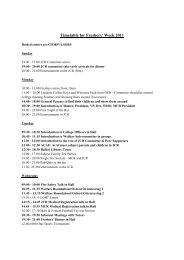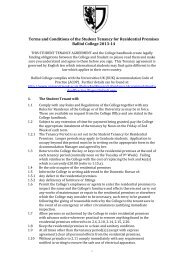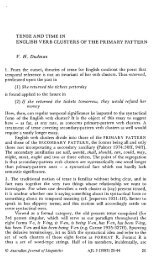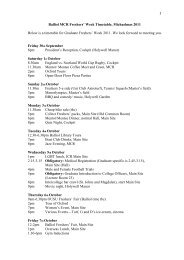x - Balliol College - University of Oxford
x - Balliol College - University of Oxford
x - Balliol College - University of Oxford
You also want an ePaper? Increase the reach of your titles
YUMPU automatically turns print PDFs into web optimized ePapers that Google loves.
SJ Roberts - July 2011 Revision 1/ page 6<br />
4 Functions<br />
You should be familiar with the properties <strong>of</strong> standard functions, such<br />
polynomials, rational functions (where both numerator and denominator<br />
are polynomials), exponential functions, logarithmic functions, and<br />
trigonometric functions and their identities.<br />
25. (i) For what value(s) <strong>of</strong> x is the function f x x / x 2 1<br />
undefined Describe the behaviour <strong>of</strong> f as x approaches these<br />
values from above and below.<br />
(ii) Find the limits <strong>of</strong> f x<br />
and dx<br />
df / as x and x .<br />
(iii) Does the function have stationary values If so, find the values<br />
<strong>of</strong> x and f x<br />
at them.<br />
(iv) Now make a sketch <strong>of</strong> the function.<br />
26. Sketch<br />
y<br />
t<br />
e and<br />
y<br />
3t<br />
e versus time t for 0 t 3. When a<br />
quantity varies as<br />
t<br />
e <br />
/<br />
, is called the time constant. What are<br />
the time constants <strong>of</strong> your two plots Add to your sketch two curves<br />
showing the variation <strong>of</strong> a quantity with (i) a very short time<br />
constant, (ii) a very long time constant.<br />
27. A quantity varies as<br />
y<br />
100e<br />
10t<br />
e<br />
t<br />
/10<br />
. Which part controls the<br />
behaviour <strong>of</strong> y at short time scales (i.e. when t is just above zero),<br />
and which at long time-scales


